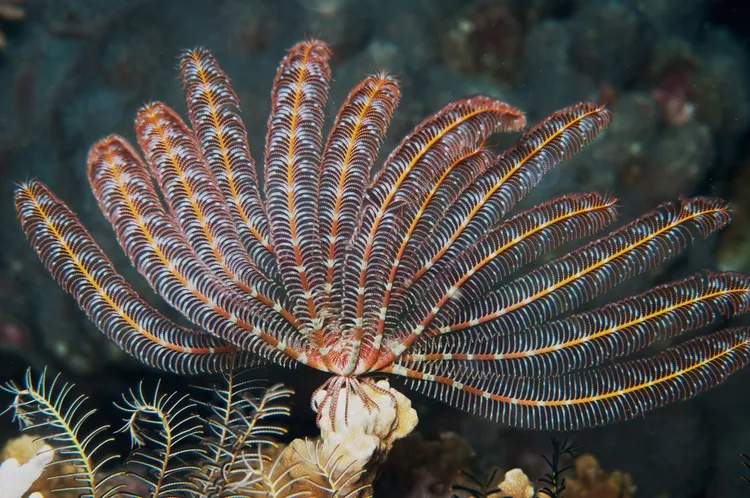
The Incredible Secret Lives of Sea Lilies and Feather Stars
Prepare to be wowed, things are about to get weird (in a wonderful way).
Beneath the surface of the sea is a world so vast that its mysteries are only slowly revealed to us ... and when they are, they are often strange and beautiful beyond what we could previously imagine.
Take the crinoids. These members of the echinoderm family are related to sea stars and sea urchins but are far less famous. There are around 600 living species of these marine invertebrates, all marked by the same basic five-sided symmetry of their cousins—though they often have multiple arms that make the initial five sides hard to distinguish.
These creatures have some history. They date back to the Ordovician period between 485.4 and 443.8 million years ago. And they were abundant, as we know by the rich fossil records they left – many thick limestone beds from the mid- to late-Paleozoic are comprised of almost all bits of crinoids. But until the discovery of living ones, they were assumed extinct.
Crinoids have the same interior system of canals ending in tube feet as the other echinoderms, as well as the same unusual ligament tissue that can alter between rigid and flaccid states, according to the National Oceanic and Atmospheric Administration (NOAA).
But unlike the other echinoderms, crinoids fasten their beautiful selves to the seafloor by way of their handy-dandy stalk. The species that keep their stalks are called sea lilies, as you can see in the photos directly below. The rest lose their stalks as they mature and can swim and float, attaching themselves with a set of small legs (called cirri); these are the feather stars.
Advertisements
05 September 2023
Advertisements



